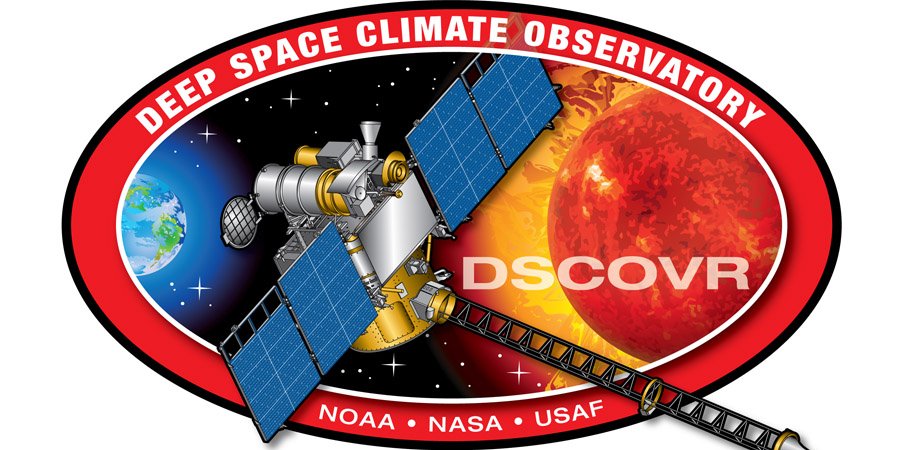DSCOVR to go live on 27 July
Saturday, 25 June 2016 14:24 UTC

Exciting news from the NOAA SWPC! They have announced that their Deep Space Climate Observatory (DSCOVR) spacecraft will replace NASA's Advanced Composition Explorer (ACE) spacecraft on Wednesday 27 July at 16:00 UTC as the primary source of real time space weather data!
The Advanced Composition Explorer (ACE) mission was launched in 1998 and provides us with valuable real-time data of the solar wind and interplanetary magnetic field conditions at the Sun-Earth L1 point. This is a fixed point in space between the Earth and the Sun where satellites can maintain a stable orbit as the pull of the Sun and Earth's gravity are equal here. From the Sun-Earth L1 point its about 1.6 million kilometers to Earth and that means a satellite at this location can serve as an early warning system for incoming solar storms about 30 to 60 minutes in advance. That is exactly what ACE has done during the past 19 years and it has been a crucial tool for every aurora lover around the world.

Image: DSCOVR at the Sun-Earth L1 point.
The Advanced Composition Explorer (ACE) spacecraft however has its issues and limitations, but most of those will be a thing of the past once DSCOVR becomes the primary space weather satellite. Strong solar radiations storms for example were troublesome for ACE's SWEPAM instrument but this should be no problem for DSCOVR's Faraday Cup plasma sensor.
The Advanced Composition Explorer (ACE) spacecraft will continue its mission at the Sun-Earth L1 point after the switch to DSCOVR but it will no longer be providing us with real time data after 27 July. There are a lot of positives with this switch to DSCOVR but there is a small downside and that is going to be the lack of realtime EPAM proton and electron data as DSCOVR doesn't have such an instrument. The SWPC announced that if in the future ACE data become available in real-time from an alternate network, SWPC will continue to serve ACE real-time data as well. For more information we invite you to read NOAA's announcement on their website.
SpaceWeatherLive will of course continue to provide realtime ACE data until the switch to DSCOVR data on 27 July.
Thank you for reading this article! Did you have any trouble with the technical terms used in this article? Our help section is the place to be where you can find in-depth articles, a FAQ and a list with common abbreviations. Still puzzled? Just post on our forum where we will help you the best we can!
Latest news
Latest forum messages
Support SpaceWeatherLive.com!
A lot of people come to SpaceWeatherLive to follow the Sun's activity or if there is aurora to be seen, but with more traffic comes higher server costs. Consider a donation if you enjoy SpaceWeatherLive so we can keep the website online!

Space weather facts
| Last X-flare | 2025/03/28 | X1.1 |
| Last M-flare | 2025/04/01 | M2.5 |
| Last geomagnetic storm | 2025/03/27 | Kp5 (G1) |
| Spotless days | |
|---|---|
| Last spotless day | 2022/06/08 |
| Monthly mean Sunspot Number | |
|---|---|
| February 2025 | 154.6 +17.6 |
| April 2025 | 152.5 -2.1 |
| Last 30 days | 130.7 -17.9 |


